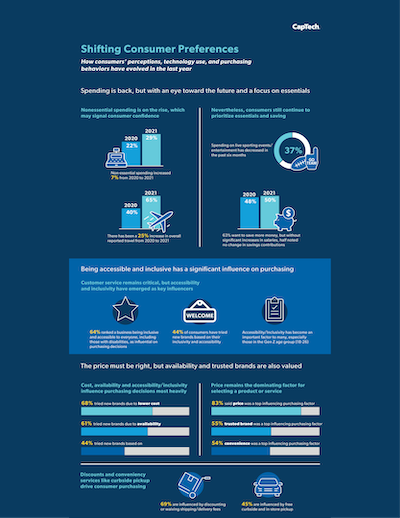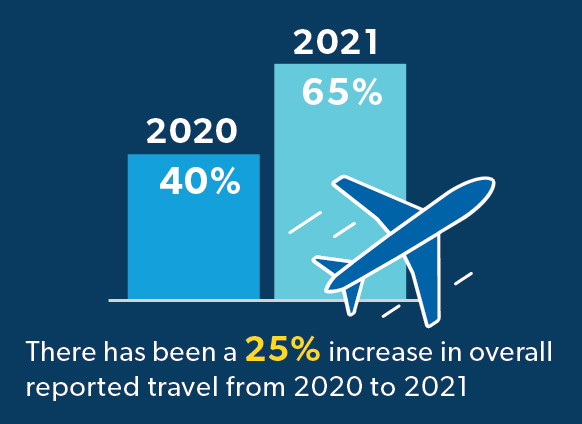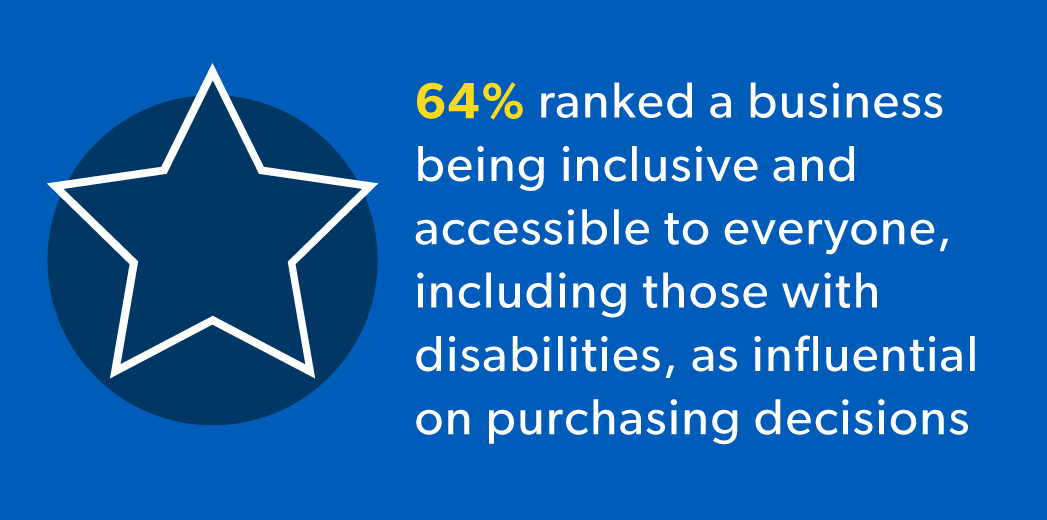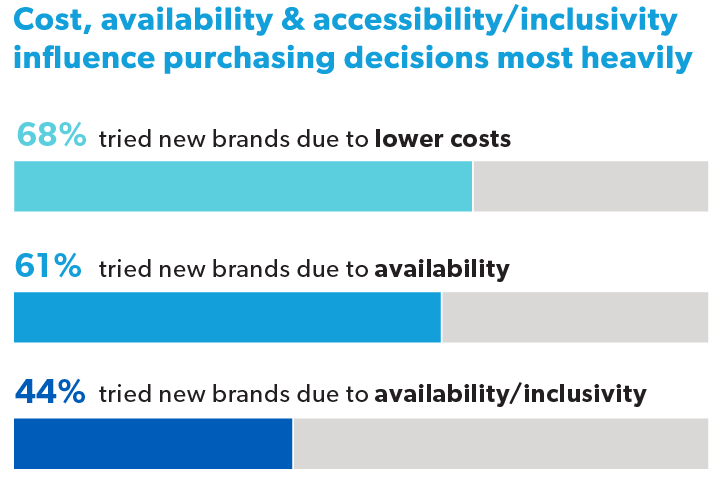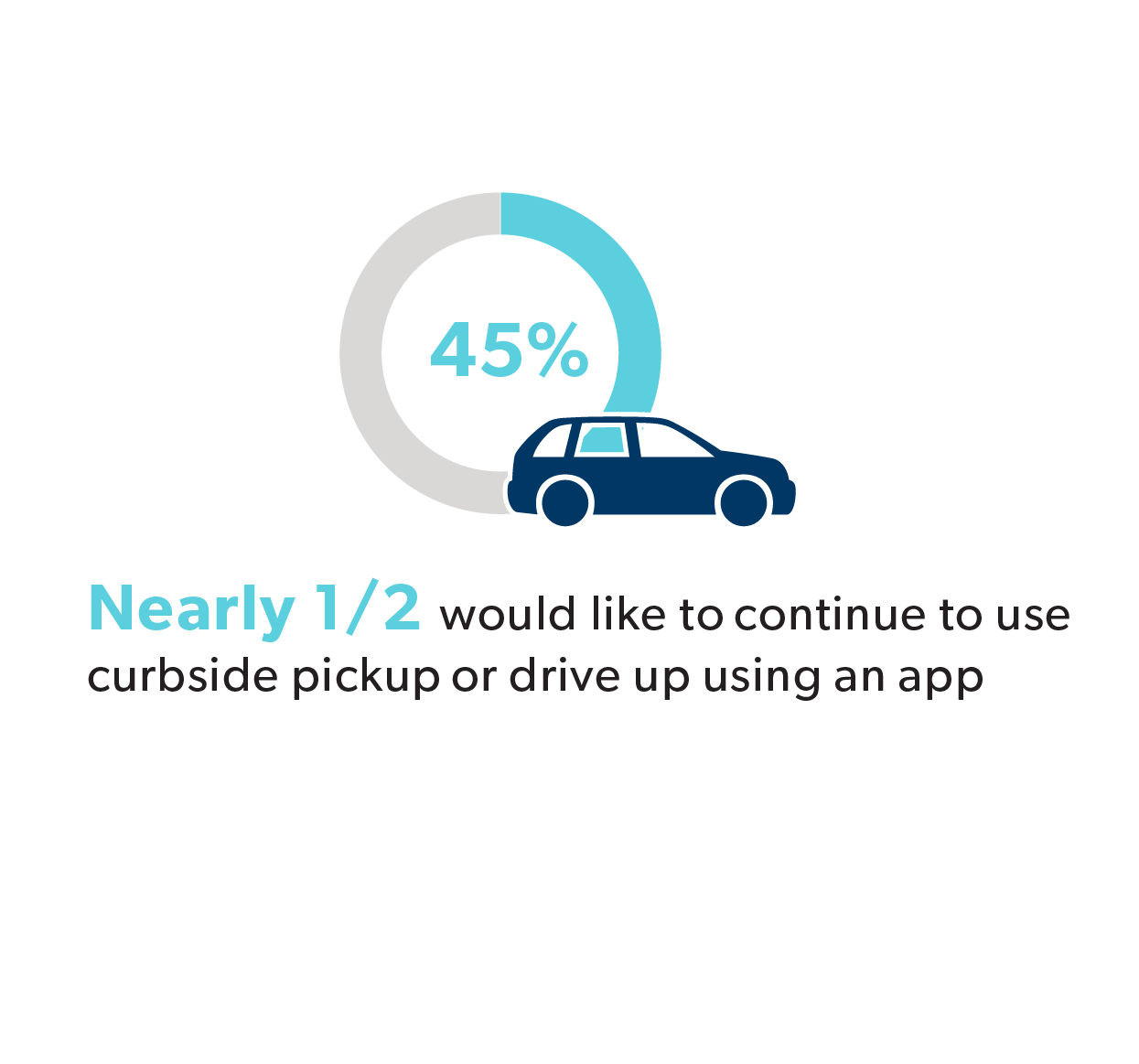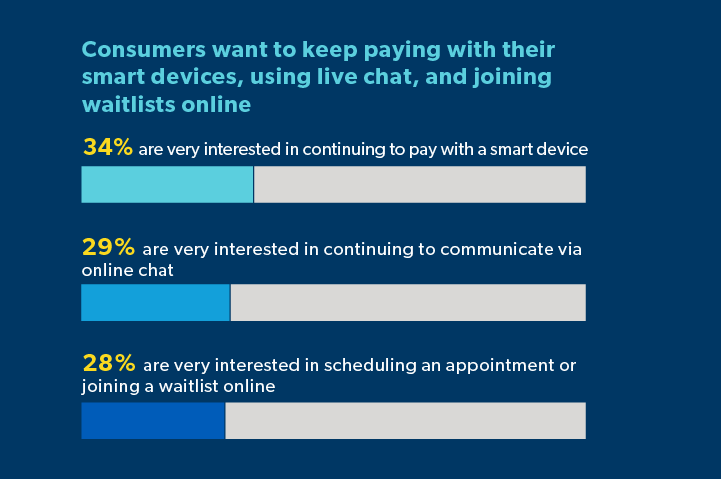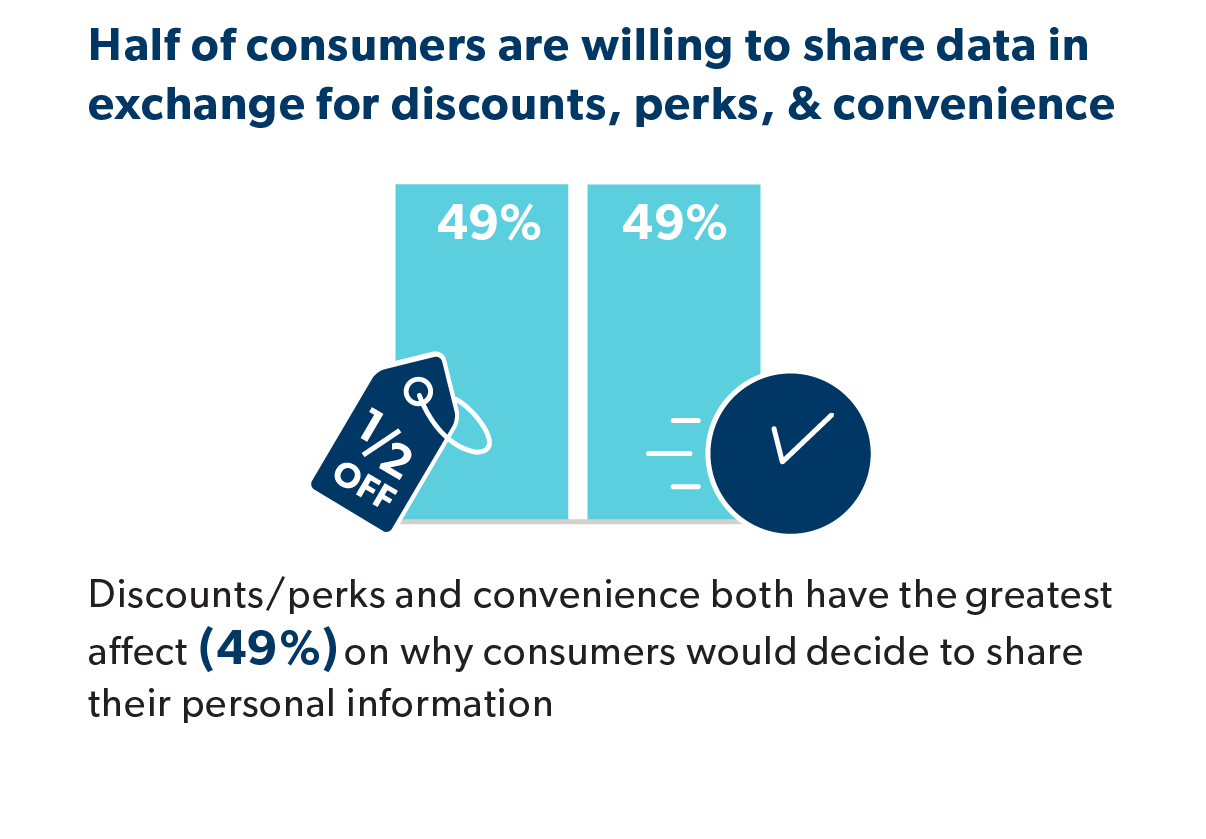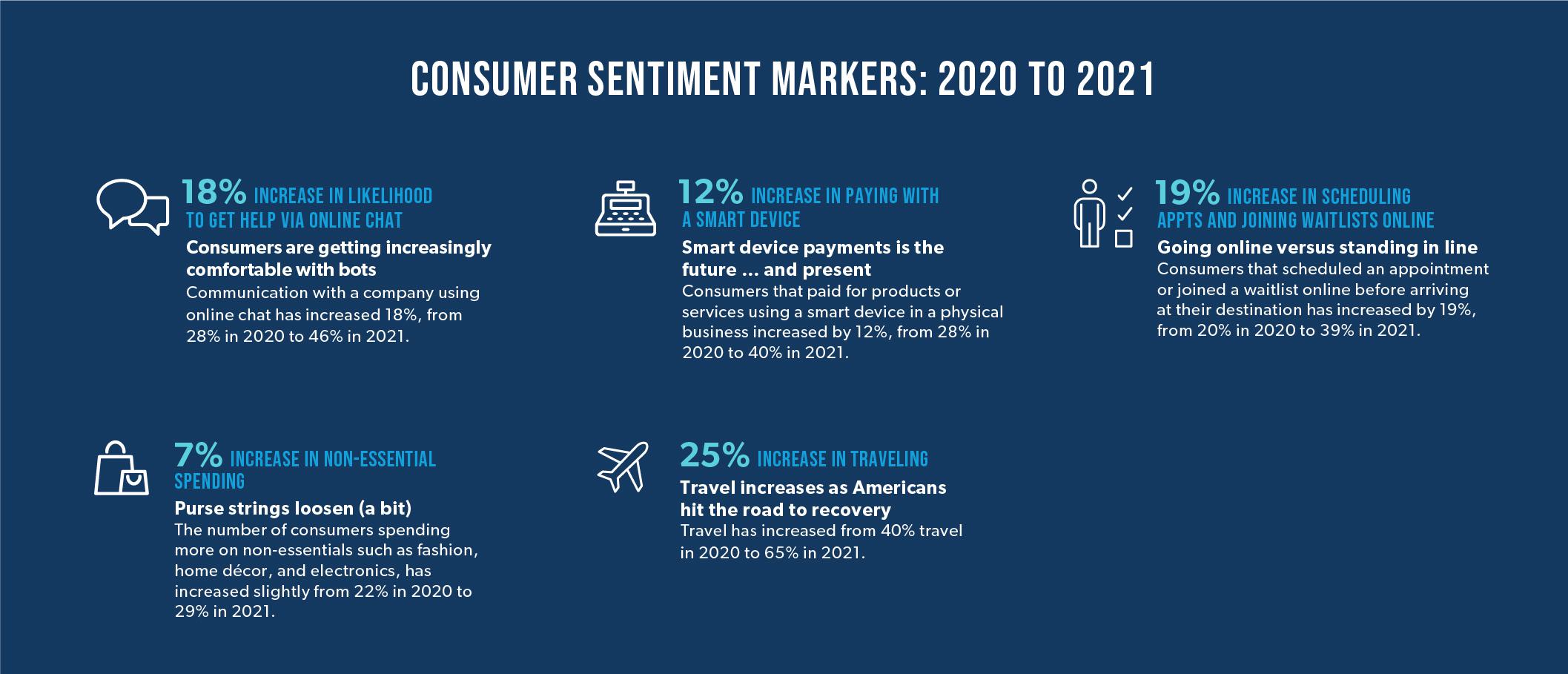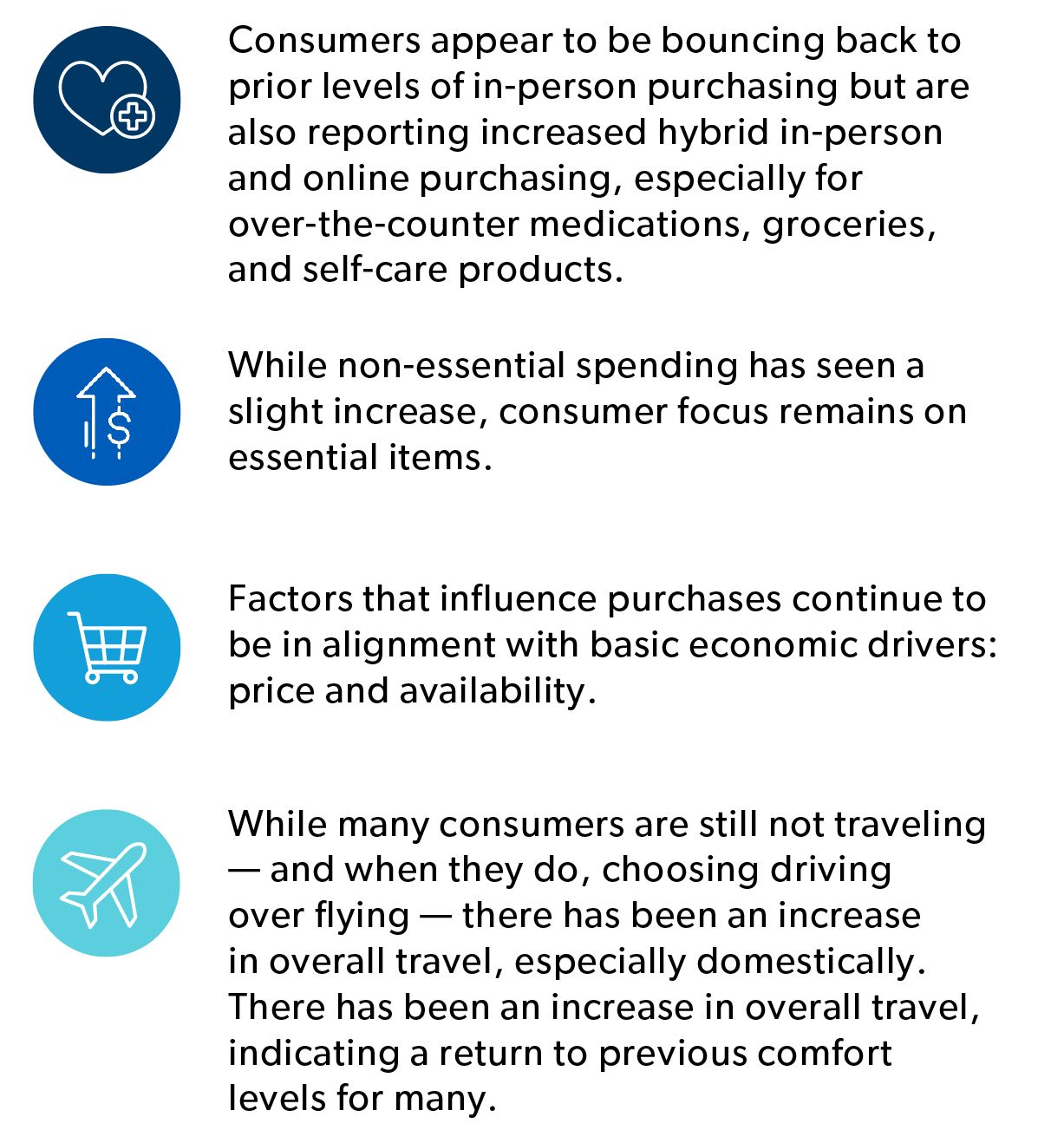Articles October 28, 2021
Consumer-Driven Innovation in 2021


The Resources
SPENDING IS BACK, BUT WITH AN EYE ON THE FUTURE AND A FOCUS ON ESSENTIALS
BEING ACCESSIBLE AND INCLUSIVE HAS A SIGNIFICANT INFLUENCE ON PURCHASING
THE PRICE MUST BE RIGHT, BUT AVAILABILITY AND TRUSTED BRANDS ARE ALSO VALUED
DIGITAL SAVVINESS AND CONSUMPTION ARE HERE TO STAY
INNOVATIVE TECHNOLOGIES CONTINUE TO MEET CHANGING NEEDS
PERSONALIZATION AND CONVENIENCE DRIVE DATA SHARING
HAS CONSUMER BEHAVIOR RETURNED TO “PRE-COVID-19” NORMS?
THE OPPORTUNITY: KEEPING PACE WITH CONSUMERS
Methodology and Sources

Bree Basham
Principal, Go-to-Market & Growth Strategy
As Principal of CapTech’s Go-to-Market & Growth Strategy, Bree Basham leads our efforts to shape how we bring services, solutions, and stories to market—accelerating growth and deepening client impact. Drawing on a career that spans strategy, customer experience, and marketing, Bree brings a rare blend of creative vision and strategic discipline to CapTech’s growth initiatives.


